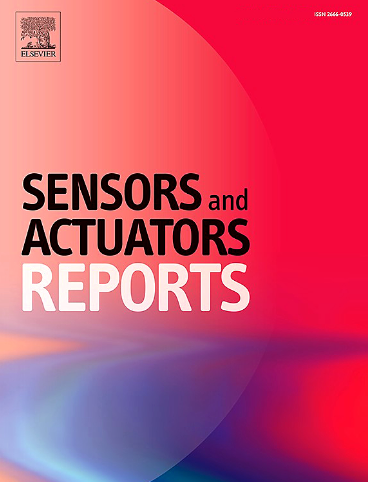Dual-mode ratiometric electrochemical and turn-on fluorescent probe for reliably detecting H2O2 in Parkinson's disease serum
IF 7.6
Q1 BIOTECHNOLOGY & APPLIED MICROBIOLOGY
引用次数: 0
Abstract
Accurate diagnosis and effective treatment of Parkinson's disease (PD) rely on the accurate detection of the corresponding biomarkers. The build-up of reactive oxygen species (ROS), for instance, hydrogen peroxide (H2O2), resulting in oxidative stress inside cells is closely related to the pathogenesis of PD. In this study, two compounds, Re-B and Re-OB, were synthesized through a simple one-step reaction. Upon reacting with H2O2, the borate ester group in Re-B is selectively cleaved, restoring the phenol group. This leads to both a dual-signal ratiometric electrochemical response and a ``turn-on'' fluorescence effect. The Re-B probe demonstrates a clear ``turn-on'' electrochemical current response at −311.1 mV, followed by a ``turn-off'' response at −257.6 mV when interacting with H2O2 on a single-walled carbon nanotube-modified screen-printed carbon electrode (SPCE/SWCNTs). Concurrently, the fluorescence spectrum shows a ``turn-on'' response with an emission peak at 586 nm. The fluorescence and ratiometric electrochemical methods developed in this study show exceptionally high sensitivity and selectivity for H2O2, with detection limits as low as 0.5 μM for the electrochemical method and 0.1 μM for fluorescence. The consistency between the results from both electrochemical and fluorescence quantification of H2O2 levels in serum underscores its reliability. This approach has significant potential as a point-of-care diagnostic device for PD early detection, providing valuable information for timely diagnosis and treatment.

可靠检测帕金森病血清中H2O2的双模比例电化学和开启荧光探针
帕金森病的准确诊断和有效治疗依赖于相应生物标志物的准确检测。过氧化氢(H2O2)等活性氧(ROS)在细胞内产生氧化应激与PD的发病密切相关。本研究通过简单的一步反应合成了Re-B和Re-OB两种化合物。与H2O2反应后,Re-B中的硼酸酯基选择性裂解,恢复苯酚基。这导致双信号比例电化学响应和“开启”荧光效应。Re-B探针在单壁碳纳米管修饰的丝网印刷碳电极(SPCE/SWCNTs)上与H2O2相互作用时,在−311.1 mV时表现出明显的“开通”电化学电流响应,随后在−257.6 mV时表现出“关断”响应。同时,荧光光谱显示出“开启”响应,在586 nm处有一个发射峰。本研究开发的荧光和比例电化学方法对H2O2具有极高的灵敏度和选择性,电化学方法的检测限低至0.5 μM,荧光方法的检测限低至0.1 μM。电化学和荧光定量测定血清中H2O2水平结果的一致性表明了其可靠性。该方法具有作为PD早期检测的即时诊断设备的巨大潜力,为及时诊断和治疗提供了有价值的信息。
本文章由计算机程序翻译,如有差异,请以英文原文为准。
求助全文
约1分钟内获得全文
求助全文
来源期刊

Sensors and Actuators Reports
Multiple-
CiteScore
9.60
自引率
0.00%
发文量
60
审稿时长
49 days
期刊介绍:
Sensors and Actuators Reports is a peer-reviewed open access journal launched out from the Sensors and Actuators journal family. Sensors and Actuators Reports is dedicated to publishing new and original works in the field of all type of sensors and actuators, including bio-, chemical-, physical-, and nano- sensors and actuators, which demonstrates significant progress beyond the current state of the art. The journal regularly publishes original research papers, reviews, and short communications.
For research papers and short communications, the journal aims to publish the new and original work supported by experimental results and as such purely theoretical works are not accepted.
 求助内容:
求助内容: 应助结果提醒方式:
应助结果提醒方式:


